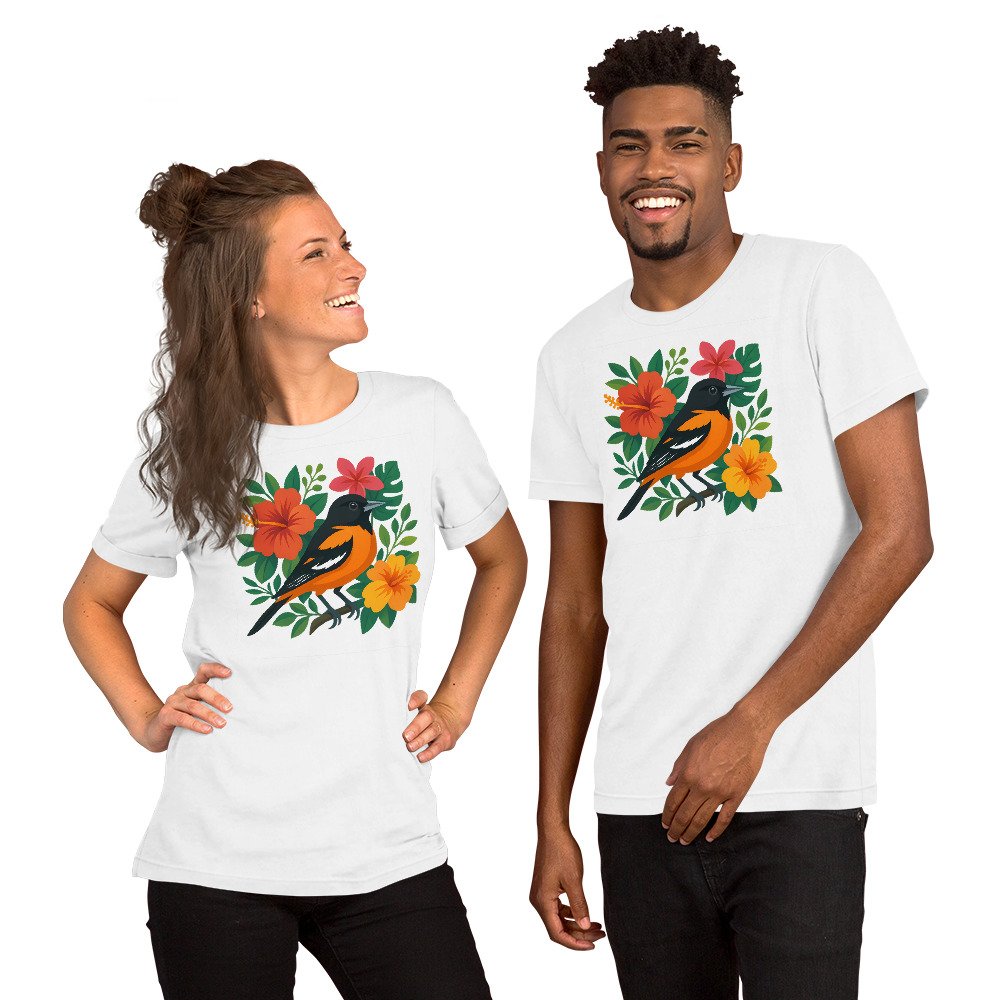An Introduction to the Baltimore Oriole
Catching sight of a male Baltimore Oriole in the spring can stop even seasoned birdwatchers in their tracks. With its vivid burst of orange against a glossy black backdrop, this migratory songbird is a lively messenger of spring throughout eastern and central North America. While its name may be familiar from the world of baseball, the bird itself, Icterus galbula, has roots that stretch deep into the natural and cultural fabric of the U.S.
Part of the Icteridae family, it’s related to the Red-winged Blackbird and Eastern Meadowlark. The “Baltimore” in its name isn’t about location—it traces back to the orange and black colors on the coat of arms of George Calvert, the 17th-century Lord Baltimore and Maryland colony founder. Fittingly, the oriole was named Maryland’s state bird in 1947 and lends its colors and name to the city’s baseball team.
Maryland’s affinity for the oriole is long-standing. The species received state-level protection as early as 1882—well before the 1918 Migratory Bird Treaty Act—highlighting how this bird has been deeply cherished and protected. To understand the Baltimore Oriole is to appreciate both its dazzling presence and its deeper place in American history.
Spotting a Baltimore Oriole: What to Look For
Identifying Baltimore Orioles goes beyond spotting orange feathers; subtle differences in plumage help distinguish age, sex, and even species.

Adult Male: His jet-black head and upper body contrast with a brilliant orange chest and belly. A single white wing bar stands out as a key marker.

Adult Female: Less flamboyant, she displays olive-brown upperparts and a dull orange to yellowish underside. With age, her colors intensify, sometimes rivaling males. She has two wing bars—another helpful clue.

Juveniles & First-Year Males: Resemble adult females with muted yellow-brown tones. Young males won’t show their iconic coloring until their second autumn.
To help clear up common identification challenges, this table compares the key features of the Baltimore Oriole with its closest relatives and look-alikes in the East.
| Feature | Adult Male Baltimore Oriole | Adult Female Baltimore Oriole | Adult Male Orchard Oriole | Adult Male Bullock’s Oriole |
| Color | Bright, fiery orange & black | Olive-brown to dull orange | Deep chestnut/rust & black | Orange with black eye-line |
| Head | Fully black hood | Grayish or olive, may have black mottling | Fully black hood | Orange face, black crown & throat |
| Wing Bars | Single, bold white bar | Two white bars | No wing bars (chestnut shoulder patch) | Large white wing patch |
| Size | 7-8.5 inches | 7-8.5 inches | Smaller (6-7 inches) | Same size as Baltimore |
The “Northern Oriole” Twist
Between 1973 and 1995, scientists grouped the Baltimore Oriole with the Bullock’s Oriole under one species: the Northern Oriole. This decision was based on hybrid zones in the Great Plains. However, DNA testing revealed that these two orioles aren’t even close cousins. That revelation led to their reclassification as separate species once again in 1995—a reminder of how science evolves with new evidence.

The Baltimore Oriole’s Voice
More often heard than seen, the oriole’s flute-like song carries through treetops.
Male Song: Clear, whistling notes form short, melodic phrases. Each male’s tune is unique, helping define territory and attract mates.
Calls: Harsh chatters signal alarm or aggression, especially near nests.
Females Sing Too: Though softer and shorter, females also vocalize, especially while foraging.
Similar Species at a Glance
Comparing look-alikes helps clear confusion:
- Male Orchard Oriole: Rusty chestnut, no wing bars.
- Male Bullock’s Oriole: Orange face, white wing patches, and a black crown.
Seasonal Habits and Habitats
Breeding: Orioles favor open woodlands, park edges, and suburban yards with tall deciduous trees like maples and elms. These “edge” habitats offer ideal nesting spots.
Migration: They’re long-distance flyers, arriving in early spring (April-May) and departing as early as July. They migrate at night in flocks, dodging predators and using calmer winds.
Winter: Found from Florida to northern South America, they seek shade-grown coffee farms and tropical forests, linking their fate to sustainable agriculture.
Feeding and Attracting Orioles
Orioles don’t visit traditional seed feeders. Their preferences vary by season:
Spring/Fall:
- Grape Jelly: Use only natural jelly, diluted with water.
- Oranges: Halved and placed visibly—color attracts them.
- Nectar: Mix 1 part sugar with 4 parts water (no dyes or honey).
Summer:
- Mealworms: Offer protein-rich insects to help feed nestlings.
- Garden Insects: Orioles are natural pest controllers, devouring caterpillars and beetles.

Oriole Nesting: A Hanging Work of Art
Built solely by females, the nest is a hanging pouch woven from natural and synthetic fibers. Found high in trees, these nests are engineering marvels—but come with risks. Long threads can entangle and harm birds. If offering nesting material, cut fibers to less than four inches.
Inside, she lays 3–7 eggs. After a two-week incubation, both parents feed the chicks until they fledge about 14 days later.
Creating a Backyard Haven
To turn your yard into an oriole magnet:
- Plant Native Trees: Especially those bearing dark fruits like serviceberry or mulberry.
- Provide Water: A moving water source boosts appeal.
- Place Feeders Strategically: In quiet areas near cover.
Conservation: A Familiar Bird at Risk
Despite its “Least Concern” label, the Baltimore Oriole has lost 44% of its population since 1970. The broader bird decline in North America—3 billion gone—shows that even common species aren’t safe.
Threats Include:
- Habitat Loss: Urban development and deforestation on both breeding and wintering grounds.
- Pesticides: Killing both birds and their insect food.
- Migration Hazards: Window strikes, light pollution, and tall structures.
Small Actions, Big Impact
Want to help? Here’s how:
- Make windows bird-safe.
- Keep cats indoors.
- Plant native vegetation.
- Avoid pesticides.
- Drink bird-friendly coffee.
- Cut down on plastic.
- Participate in citizen science projects like eBird.
Quick Takeaways
- Named after Lord Baltimore’s crest, it’s a state symbol with flair.
- ID can be tricky: females and young males are more muted.
- Food needs change by season: jelly and oranges in spring, insects in summer.
- Declining numbers make backyard support more vital than ever.
- Every cup of bird-friendly coffee supports its winter survival.
Explore More
- All About Birds (Cornell Lab)
- Merlin Bird ID App
- Lesley the Bird Nerd’s Baltimore Oriole Video
This bright beauty isn’t just a pretty face—it’s a fascinating and fragile thread in the ecological tapestry. Watching, feeding, and protecting Baltimore Orioles brings color and purpose to your backyard, and maybe, a little hope too.
If you’re as captivated by these vibrant birds as we are, consider bringing a touch of their unique charm into your daily life with our exclusive Baltimore Oriole & Tropical Flowers T-Shirt, available now in our shop.


